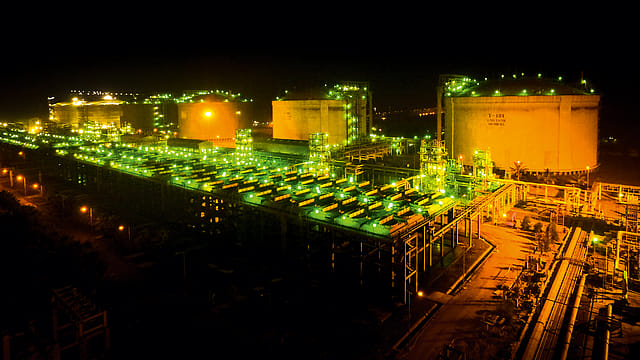Global demand for LNG grew by 12.5% in 2019: Shell
ADVERTISEMENT

The global demand for liquefied natural gas (LNG) grew by 12.5% to 359 million tonnes in 2019, according to a report by the global oil major Shell. In its latest annual LNG Outlook published on Thursday, the oil company indicated LNG’s growing importance in a world moving to a low-carbon energy system.
The key developments in the LNG industry in 2019 included the availability and consumption of an additional 40 million tons of the gas by the market. The European power sector was the biggest consumer because competitively-priced LNG helped power companies make a switch from coal-to-gas as fuel. LNG also turned out to be a clear substitute for declining domestic gas production and pipeline gas imports in these countries.
However, Asia saw only a modest rise in imports in 2019 compared to the previous two years because of mild weather and rising electricity generation from nuclear power in Japan and South Korea, two of the largest global importers.
In China, LNG imports increased by 14% in 2019 as efforts continued to improve urban air quality. Also, there was demand growth in South Asian countries. In total, India, Bangladesh, and Pakistan imported 36 million tons, an increase of 19% over last year, pointing to emerging growth countries in Asia.
January 2026
Netflix, which has been in India for a decade, has successfully struck a balance between high-class premium content and pricing that attracts a range of customers. Find out how the U.S. streaming giant evolved in India, plus an exclusive interview with CEO Ted Sarandos. Also read about the Best Investments for 2026, and how rising growth and easing inflation will come in handy for finance minister Nirmala Sitharaman as she prepares Budget 2026.
“The global LNG market continued to evolve in 2019 with demand increasing for LNG and natural gas in power and non-power sectors. Record supply investments will meet people’s growing need for the most flexible and cleanest-burning fossil fuel,” said Maarten Wetselaar, integrated gas and new energies director, Shell.
However, Wetselaar says the current weak market conditions due to record new supply coming in, two successive mild winters, and the Coronavirus situation, are unlikely to continue for long. “We expect equilibrium to return, driven by a combination of continued demand growth and reduction in new supply coming on-stream until the mid-2020s,” says Wetselaar.
The year 2019 also saw a strong belief in the long-term demand growth of LNG with a record investment decision to create an additional 71 million ton liquefaction capacity. Projections for 2040 show that gas will take care of the 43% of the additional demand for energy, while renewable energy will contribute 37% of the new demand. The combination of gas and renewable energy will supply 80% of the growth in demand. ‘’Over half of the growth in natural gas is expected to come from non-power sources—such as industry, residential and commercial and equipment—as more carbon-intensive options are replaced,’’ says the report.
The report also focuses on the growing role of gas in improving air quality through coal-to-gas switching in the power and industrial sectors, with coal generation phase-out announcements more than trebling. Natural gas emits between 45-55% fewer greenhouse gases and less than one-tenth of the air pollutants than coal when used to generate electricity. That is why Shell believes gas has a major role to play, particularly in the hard-to-electrify sectors such as transport and industry.
Over the past nine years, global cumulative CO2—carbon dioxide—savings generated by switching energy sources from coal to gas stands at around 600 million tons, equivalent to 57% of annual CO2 emissions of South America.
The year gone by also saw new spot-trading mechanisms and a wider variety of indices for long-term contracts, which only shows that LNG is increasingly becoming a flexible commodity.
LNG continues to be the fastest-growing gas supply source, with expected growth of 4% compounded annual growth a year between now and 2040, with Asia expected to absorb 70% of the growth.
